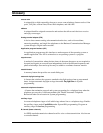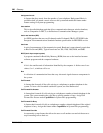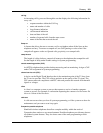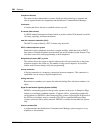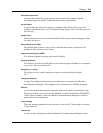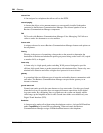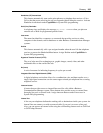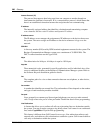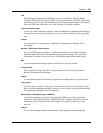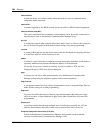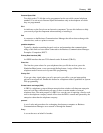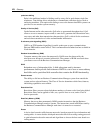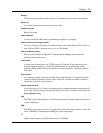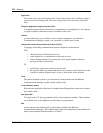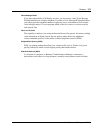
Glossary 369
Installation and Maintenance Guide
Personal Speed Dial
Two-digit codes (71-94) that can be programmed on the set to dial external telephone
numbers. You can access Personal Speed dial numbers only at the telephone on which
they are programmed.
Pin-1
An indicator on the first pin on an electronic component. You use this indicator to help
you correctly align the component when attaching or installing it.
Port
A connector on the Business Communications Manager that allows data exchange with
other devices, such as a printer or mouse.
portable telephone
Typically a handset containing keypad, receiver and transmitter that communications
using a radio link to a base station connected to the Business Communications Manager.
Examples: Companion, DECT.
Primary Rate Interface (PRI)
An ISDN interface that uses 23 B channels and a D channel (23B+D).
Prime line
The line the system selects for your telephone when you lift the receiver, press the
Handsfree/Mute button, or use an external dialing feature. Assign a Prime Line to a
telephone under Line access in System DNs programming.
Priority Call
If you get a busy signal when you call a person in your office, you can interrupt that
person for an urgent call. Enable this feature for a telephone under Capabilities in System
DNs programming.
Private branch exchange (PBX)
A PBX is a telephone system within an enterprise that switches calls between enterprise
users on local lines while allowing all users to share a certain number of external
telephone lines. The main purpose of a PBX is to save the cost of requiring a line for each
user to the telephone company central office since the PBX is owned and operated by the
enterprise rather than the telephone company.
protocol
A set of rules and procedures for exchanging data between computers or Business
Communications Managers on a network or through the Internet.
Proxy
A server that acts on behalf of another.



